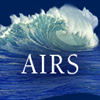
|
Caitlin Whalen Principal Oceanographer Affiliate Assistant Professor, Oceanography cwhalen@apl.uw.edu Phone 206-897-1739 |
Research Interests
Small-scale oceanic processes as viewed from global and regional scales including diapycnal mixing, internal waves, submesoscale dynamics, air–sea interactions, and mesoscale–internal wave interactions
Education
B.A. Physics, Reed College, 2008
Ph.D. Physical Oceanography, University of California at San Diego, 2015
|
Publications |
2000-present and while at APL-UW |
Interacting internal waves explain global patterns of interior ocean mixing Dematteis, G., A. Le Boyer, F. Pollmann, K.L. Polzin, M.H. Alford, C.B. Whalen, and Y.V. Lvov, "Interacting internal waves explain global patterns of interior ocean mixing," Nat. Commun., 15, doi:10.1038/s41467-024-51503-6, 2024. |
More Info |
29 Aug 2024 |
|||||||
|
Across the stable density stratification of the abyssal ocean, deep dense water is slowly propelled upward by sustained, though irregular, turbulent mixing. The resulting mean upwelling determines large-scale oceanic circulation properties like heat and carbon transport. In the ocean interior, this turbulent mixing is caused mainly by breaking internal waves: generated predominantly by winds and tides, these waves interact nonlinearly, transferring energy downscale, and finally become unstable, break and mix the water column. This paradigm, long parameterized heuristically, still lacks full theoretical explanation. Here, we close this gap using wave-wave interaction theory with input from both localized and global observations. We find near-ubiquitous agreement between first-principle predictions and observed mixing patterns in the global ocean interior. Our findings lay the foundations for a wave-driven mixing parameterization for ocean general circulation models that is entirely physics-based, which is key to reliably represent future climate states that could differ substantially from today's. |
|||||||||
Challenges facing scientific publishing in the field of Earth & space sciences AGU Editorial Network, "Challenges facing scientific publishing in the field of Earth & space sciences," AGU Adv., 5, doi:10.1029/2024AV001334, 2024. |
More Info |
17 Jul 2024 |
|||||||
|
The scientific publishing landscape is evolving rapidly. This evolution is driven by a confluence of internal and external forces, including the growth of metrics-based evaluation of scientists; an increasing volume of manuscripts combined with expectations for rapid review and publication; an increasing number of journals, including for-profit Open Access publications; and the adoption of preprint servers across a growing range of disciplines. Many of these forces are contributing to personal anxiety and fatigue for authors, reviewers, and editors. Collectively, they are placing substantial stress on scientific publishing, which is a foundational pillar of the scientific enterprise. As editors of American Geophysical Union journals and books, we remain confident in the fundamental foundations of scientific publishing, but we are concerned about the impact of these increasing stressors. By affirming and investing in editorial values, respecting scientific integrity and credibility, and committing to accessibility, transparency, and accountability, we can fortify the foundations of the scientific enterprise during a time of rapid change. |
|||||||||
A generalized slab model Stokes, I.A., S.M. Kelly, A.J. Lucas, A.F. Waterhouse, C.B. Whalen, T. Klenz, V. Hormann, and L. Centurioni, "A generalized slab model," J. Phys. Oceanogr., 54, 949-965, doi:10.1175/JPO-D-23-0167.1, 2024. |
More Info |
17 Jan 2024 |
|||||||
|
We construct a generalized slab model to calculate the ocean’s linear response to an arbitrary, depth-variable forcing stress profile. To introduce a first-order improvement to the linear stress profile of the traditional slab model, a nonlinear stress profile which allows momentum to penetrate into the transition layer (TL) is used (denoted 'mixed layer/transition layer,' or MLTL stress profile). The MLTL stress profile induces a two-fold reduction in power input to inertial motions relative to the traditional slab approximation. The primary reduction arises as the TL allows momentum to be deposited over a greater depth range, reducing surface currents. The secondary reduction results from the production of turbulent kinetic energy (TKE) beneath the mixed layer (ML) related to interactions between shear stress and velocity shear. Direct comparison between observations in the Iceland Basin, the traditional slab model, the generalized slab model with the MLTL stress profile, and the Price-Weller-Pinkel (PWP) model suggest that the generalized slab model offers improved performance over a traditional slab model. In the Iceland Basin, modeled TKE production in the TL is consistent with observations of turbulent dissipation. Extension to global results via analysis of Argo profiling float data suggests that on the global, annual-mean, ~30% of the total power input to near-inertial motions is allocated to TKE production. We apply this result to the latest global, annual-mean estimates for near-inertial power input (0.27 TW) to estimate that 0.08 ± 0.01 TW of the total near-inertial power input are diverted to TKE production. |
|||||||||






